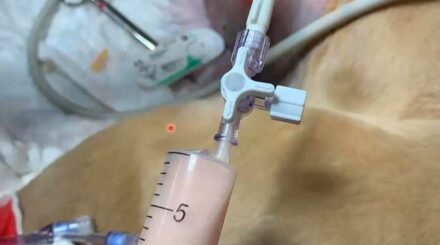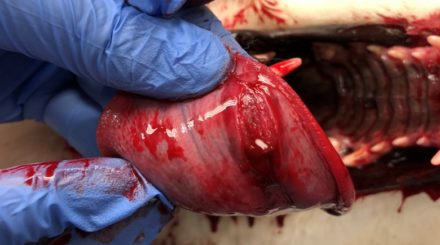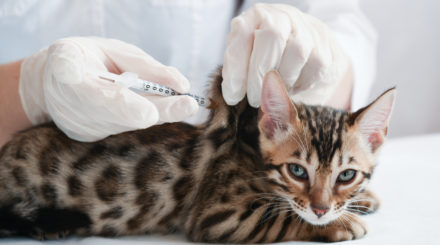A conversation with Cat the Vet: What’s new in chronic Kidney Disease?
Join our director and Internal Medicine Specialist, Scott Kilpatrick, as he discusses chronic kidney disease (CKD) in feline patients. In this FREE webinar hosted by Hills Pet UK & Ireland,…
A crisis of calcium
Although disorders of calcium metabolism are relatively common in dogs and cats, they are frequently difficult to diagnose clinically. However, improvements in the laboratory assessment of calcium homeostasis have greatly…
A Tale of Two Toxins… A liver’s story
The liver is central to so many important functions within the body, but can often be the victim toxic insults. Hepatotoxicosis can also be characterized as dosage-dependent or idiosyncratic, although…
Acute diarrhoea: Stepping away from the antibiotics
Episodes of acute diarrhoea in dogs and cats are frequently encountered in small animal practice. Many episodes will improve with symptomatic care, but antibiotics are often included in the initial…
Anaesthetic considerations for endocrine patients
This webinar will discuss the anaesthetic considerations for endocrine patients. We will focus on the most common endocrine diseases, including diabetes mellitus, insulinoma, hyperthyroidism and hyperadrenocorticism.
Approach to the acute abdomen
Approaching cases with acute abdominal pain can be daunting. However, with structured approach you’ll be able to solve the mystery of acute abdomen and help your patients in no time….
Breathing Room: Understanding and Managing Pleural Space Disease in Dogs and Cats
This webinar session will cover the pathophysiology, diagnosis, and emergency management options for pleural space diseases, including pleural effusion and pneumothorax. Gain practical knowledge and clinical tips, including numerous tips…
Canine diabetes mellitus: Demystifying a difficult disease
Cases of canine diabetes mellitus can be very challenging. Although diagnosis is often easy to establish, treatment and follow-up can be a nightmare in daily practice. In this lesson, we’ll…
Canine Hyperadrenocorticism
Canine hyperadrenocorticism is a relatively commonly encountered endocrinopathy, and generally presents as a dog with PUPD. It is essential to exclude other causes of PUPD before performing more specific tests…
Canine leishmaniosis
Canine leishmaniosis is not currently endemic in the UK, however, with increasing numbers of dogs being imported from endemic countries, it is now commonly screened for and diagnosed in dogs…
Chronic hepatitis… Coping with Copper
Chronic hepatitis in the dog can be a diagnostic and therapeutic challenge. The majority of cases of canine chronic hepatitis are idiopathic. The etiology most commonly identified as a cause…
CKD or not CKD – Diagnostic challenges and considerations
This is the first of a two-part series on chronic kidney disease (CKD). In this session we will focus on the diagnosis of chronic kidney disease with a special emphasis…
Coagulation Disorders ‘If you prick us, do we not bleed?’
In this webinar, we look at the approach to coagulation disorders in small animal practice. Coagulation is complex, but the investigations of these conditions does not have to be. We…
Cobalamin… to be or not to be?
Disorders of cobalamin (vitamin B12) metabolism are increasingly recognized in small animal medicine and have a variety of causes ranging from chronic gastrointestinal disease to hereditary defects in cobalamin metabolism….
Cracking the Case of Anaemia – Diagnosis, IMHA, and Transfusion Therapy in Small Animal Practice
Anaemia is a common yet often complex presentation in small animal medicine. This session provides a structured approach to diagnosing and managing anaemia in dogs and cats, combining practical in-clinic…
Dietary Fibre Rediscovered – Benefits in the Management of Acute & Chronic Digestive Diseases in Dogs
This webinar will review the benefits of dietary fibre in managing acute and chronic GI diseases in dogs – a “hot topic” in canine gastroenterology. The session will cover updates…
Disease of the pleural space in dogs and cats
The pleural space is a common source of disease-causing respiratory distress in dogs and cats. Prompt recognition of this as the likely cause, and rapid targeted stabilisation, is essential for…
DKA… Don’t sugarcoat it!
Diabetic ketoacidosis (DKA) is a serious and potentially life-threatening complications of diabetes mellitus (DM). Patients with DKA are often very ill, their management challenging, and concurrent conditions that can substantially…
Exocrine pancreatic insufficiency (EPI)… Making your enzymes work!
Exocrine pancreatic insufficiency (EPI) is caused by decreased production of digestive enzymes by the pancreas. The most common clinical signs are polyphagia, weight loss, and a large volume of loose…
Feline blood transfusions… As X-Men as it gets!
Anaemia is a common reason for cats to present to our clinics, but the management of anaemia has lots of challenges. Cats don’t like to make things easy! In this…





















